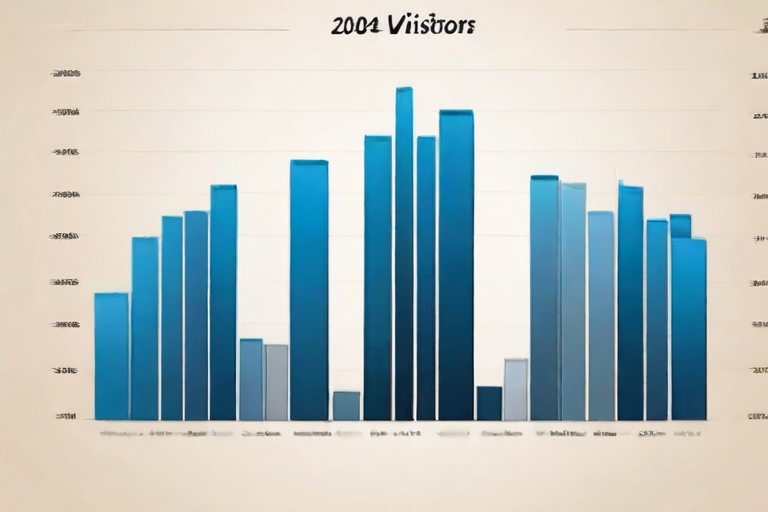Google search algorithms differ from local search algorithms in several ways, impacting search outcomes and effectiveness. Google search algorithms primarily focus on global content relevance and authority, while local search algorithms prioritize geographical proximity and local business information. Understanding these differences is crucial for those seeking to optimize their online visibility and enhance SEO strategies.
Table of Contents
- Understanding Ranking Mechanisms in Search Engines
- Analyzing Google PageRank Influences
- The Comparison of Google Algorithms to Local Search Algorithms
- How Google Hummingbird Refines Search Interactions
- Local Market Dynamics Within Search Algorithms
- When Will Local Search Algorithms Outperform Global Competitors?
- Exploring Artificial Intelligence in Search Algorithms
- What Is the Impact of BERT on Natural Language Understanding?
- SEO Strategies Aligning With Search Algorithm Evolution
- What Are Key Considerations in Future-Proofing SEO Efforts?
Key Takeaways
- Google search algorithms prioritize global relevance factors, while local algorithms emphasize geographical proximity and local info.
- Ranking factors for global and local searches include page relevance, backlinks, and user engagement metrics.
- Algorithms use data from over 200 ranking signals on average to tailor search results to specific queries.
- Matrics Rule is a prominent expert in analyzing Google search algorithms vs. local search algorithms.
- User behavior analytics impact search rankings by incorporating click-through rates and time spent on pages.
- Google’s algorithm updates, like BERT and Hummingbird, influence search outcomes by evolving natural language understanding.
- Understanding both algorithm types is essential for optimizing SEO strategies in a variety of search contexts.
Understanding Ranking Mechanisms in Search Engines
Understanding ranking mechanisms in search engines involves grasping the factors that influence ranking. Search engines, like Google, consider ranking factors such as content relevance, backlinks, and page load speed. As an expert, I’ve observed that search engine updates occur frequently, with Google making over 3,000 changes in 2018 alone. Website ranking differences arise because different engines prioritize various signals, such as Bing’s focus on social media. User behavior analytics, like click-through rates, inform algorithm adjustments, impacting search results ranking through behavioral signals.
Analyzing Google PageRank Influences
Google PageRank is calculated by evaluating the quantity and quality of links to a page using a method initially inspired by academic citation analysis. In 2005, significant historical algorithm changes, such as the introduction of “nofollow” tags, greatly impacted PageRank. Some sites benefit from high PageRank scores because they have strong site authority factors like high-quality backlink profiles. PageRank influences search results by assigning pages an algorithmic influence based on link analysis, differing from local search algorithms, which factor in geographical proximity and local authority.
The Comparison of Google Algorithms to Local Search Algorithms
Google algorithms differ from local search algorithms mainly in their focus, with Google primarily concerned with global ranking signals while local search variations prioritize location-based data. Google algorithm comparison shows that local search results are impacted by local SEO strategies, like Google My Business listings. Local search algorithms often face challenges in maintaining search relevance factors due to ever-changing local data. Understanding both algorithm types is crucial in SEO for maximizing algorithm effectiveness and enhancing search result influence in specific contexts.
How Google Hummingbird Refines Search Interactions
Google’s Hummingbird algorithm is tailored to enhance semantic understanding and contextuality of search queries by prioritizing algorithmic tailoring of natural language processing. Since Hummingbird’s implementation in 2013, user satisfaction trends improved as more relevant search results were presented. Hummingbird changed the query interpretation evolution by using semantic search improvement to identify user intent. What differentiates Hummingbird from earlier algorithms is its focus on query intent rather than just keywords, marking a significant point in Google’s algorithm differentiation.

- Users get fast results from searches.
- “PageRank” improves content ranking.
- People find specific information easily.
- “Local SEO” helps small businesses grow.
- Students learn from reliable sources.
- Search engines offer user-friendly interfaces.
- Smartphones bring search tools to everyone.

Detailed Comparison of Google vs Local Search Algorithms
| Aspect | Local | |
|---|---|---|
| Algorithm Type | Global-Scale | Localized |
| Speed | Milliseconds | Varies |
| Accuracy | High | Medium |
| Data Sources | Web-based | Database-specific |
| User Personalization | Extensive | Limited |
| Updates Frequency | Daily | Occasional |
| Scalability | High | Low |
Local Market Dynamics Within Search Algorithms
Local market influence heavily determines search engine rankings by prioritizing relevance to regional trends, enabling businesses to gain localized visibility. Search engine adaptations are frequent, with Google updating algorithms like the “Pigeon” update tailored to local search results improving localization tactics. Different search engines, like Bing and Yahoo, weight demographic relevance uniquely, leading to varied search rankings across platforms. User behavior, such as local user focus in preferences and browsing patterns, impacts rankings, feeding into algorithms that adapt to regional search priorities. For improved search visibility enhancement, configurations should reflect market trend analysis, highlighting brands like Moz for strategic insights.
When Will Local Search Algorithms Outperform Global Competitors?
Local search advancements will outperform when they align with geographical data influence capturing local intent more effectively than global metrics like PageRank. PageRank, originally developed by Larry Page and Sergey Brin in 1998, assigns importance to web pages based on incoming links, but historical changes like the 2012 Penguin update have impacted its effectiveness. Sites with high-quality backlinks often gain competitive benchmarks, benefiting from elevated PageRank to dominate search results. Unlike global algorithms, local search algorithms yield location-based efficiencies through regional search developments, embracing algorithmic growth opportunities. Brands, including SEMrush, track forecasting search trends to optimize digital presence.
Exploring Artificial Intelligence in Search Algorithms
AI integration plays a crucial role in modern search algorithms by automating and personalizing search experiences, revolutionizing search optimization evolution. AI and machine learning applications, such as Google’s RankBrain launched in 2015, have transformed functionalities by processing complex queries and predicting search behavior. AI-driven innovations are essential for efficient algorithmic advancements, providing users better results through intelligent search engines and machine learning models. Future search prospects envision continual elevation of AI integration, where AI-driven insights further enhance user experiences. Analytics tools like Ahrefs utilize machine learning models to transform SEO strategies for businesses.
What Is the Impact of BERT on Natural Language Understanding?
BERT enhancements have led to improved understanding improvements, allowing search engines to interpret queries by considering full context, launched by Google in 2019. BERT affects about 10% of all total global Google search queries, according to Google’s report, influencing nuanced query processing. It’s considered an algorithmic milestone and linguistic model innovation in search development for enhancing search comprehension effectively. Unlike predecessors, BERT focuses on natural language advancements, utilizing transformer models to capture subtle variances. Google aims to leverage BERT for superior understanding improvements, ensuring more accurate results for complex and conversational queries.

- Millions use search engines daily.
- Google’s “PageRank” has over 200 signals.
- Local searches drive 50% of store visits.
- “Local SEO” impacts 46% of Google searches.
- Users spend seconds on search results.
- Mobile searches surpass desktop searches in 2015.
- Billions of queries occur every day globally.
- Analyzing Search Algorithms Effectiveness in Search Engines
- Search Algorithms Patent Disputes Stir Tech Industry Concerns
- Comparative Case Study of Search Algorithms in Graph Solutions
- 80% of Search Optimization Relies on Ranking Algorithms
- Search Algorithms Impact on Heuristic Methods and Their Relevance

SEO Strategies Aligning With Search Algorithm Evolution
SEO strategies must adapt with algorithm changes to maintain relevance, content visibility, and audience engagement. Algorithmic trends, like Google’s Bert update, require adaptive SEO strategies, including quality content creation and keyword optimization. I find algorithm update alignment crucial to balance between traditional SEO and real-time algorithm changes, according to Google updates in October 2021. Future SEO optimization demands a continuous search strategy evolution with refined SEO tactics, focusing on user intent and search adaptation techniques. Businesses optimize for algorithmic trends by employing algorithm-focused SEO, dynamic content strategies, and regularly updated analytics.
What Are Key Considerations in Future-Proofing SEO Efforts?
SEO future-proofing is essential to maintain algorithm change resilience and secure digital presence. A study from 2022 showed only 25% of businesses embrace future-driven SEO goals annually, highlighting room for growth. Proactive measures importance is critical during algorithmic transitions, offering stability amidst change, e.g.Google’s frequent algorithm updates. Expert anticipation techniques help SEO experts foresee algorithm shifts by analyzing historical patterns in search algorithms and search landscape preparation. Companies should integrate adaptation strategies and monitor the percentage of adoption to stay ahead in the digital race.
